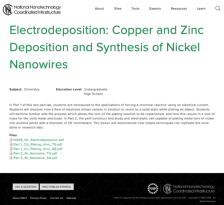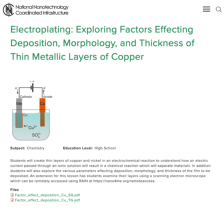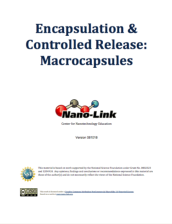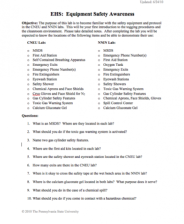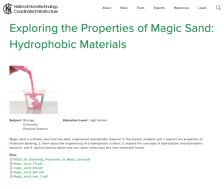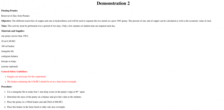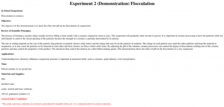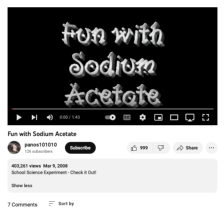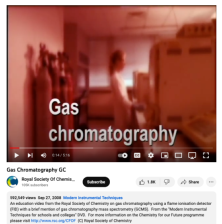Browse Resources
Resources |
|---|
This lab, presented by the National Nanotechnology Coordinated Infrastructure, covers the concept of chemical reactions. Students will learn how "a flow of electrons allows cations in solution to revert to a solid state while plating an object" as well as "the process which allows the ions of the...
This resource provides an introductory activity on electrons in atoms and molecules. Core concepts include the formation of atoms, chemical bonding, chemical polarity and atoms in electric fields. The interactive module allows students to test their knowledge as they learn. The material would be...
This lab, presented by the National Nanotechnology Coordinated Infrastructure, covers the concept of electroplating. Students will learn how "an electric current passed through an ionic solution will result in a chemical reaction which will separate materials" by creating thin layers of copper and...
Module Description:
This module, created by the Center for Nanotechnology Education (Nano-Link), introduces "the process of forming macrocapsules and the concept of self-assembly." During the module learning activity students study the process of encapsulation and controlled release with ...
This 1-page lab activity, created by the Nanotechnology Applications and Career Knowledge Network (NACK) Center at Pennsylvania State University, helps familiarize students "with the safety equipment and protocol in the Center for Nanotechnology Education and Utilization (CNEU) and National...
Nanotechnology is an area of science and engineering that occurs at the atomic and molecular level. This is certainly a difficult concept to grasp. This website, presented by the National Nanotechnology Coordinated Infrastructure, highlights many critical concepts to understanding this smaller...
The Materials Science and Technology Teacher's Workshop (MAST) provides this demonstration on the different reactivities of copper and zinc to hydrochloric acid. In this module, the reactivities of copper and zinc to hydrochloric acid will be used to separate the two metals in a post-1983 penny. The...
The Materials Science and Technology Teacher's Workshop (MAST) provides this experiment on flocculation in ceramics. The module aims to show the changes in flocculation of suspensions resulting from varying pH levels. The lesson includes a step by step explanation of the laboratory procedure. A link...
This short YouTube video, created as part of a school science project, demonstrates how to make a supersaturated solution using sodium acetate. It also illustrates an exothermic reaction or the heat of crystallization shown when the solution is touched.
This video, distributed on YouTube by the Royal Society of Chemistry, is on the basic principles of Gas Chromatography. This video is a short primer which introduces the technique and instrumentation. There are many assumptions that are made in the presentation of this material, due to the fact the...
|
| ← PreviousNext → |
